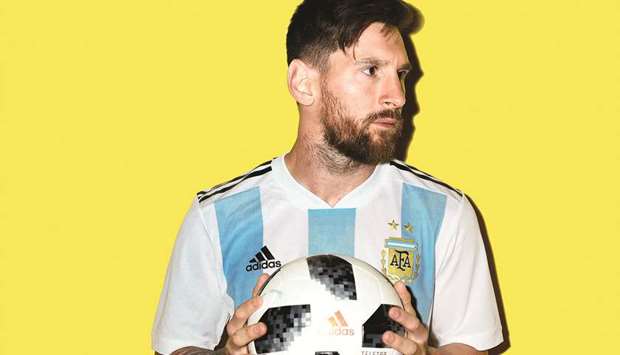Any festivity or chant of Viva World Cup would be incomplete without La Pulga Atomica, aka Messi. Celebrating his 31st birthday today, Lionel Messi’s story has being nothing short of an incredible journey.
The pre-teen Messi was diagnosed with a growth hormone deficiency which was hindering his normal growth rate. His parents could not afford the treatment. It all changed forever when FC Barcelona’s Rexach was mesmerised by the brilliance of the then 13-year-old Leo. Barcelona offered to pay his medical bills and move the family to Spain. Rexach was so spellbound that due to lack of suitable paper, he decided to seal the deal on a piece of paper available instantaneously – in this case a paper napkin. That paper napkin has been kept in a frame to preserve it for the ages as the mark of a new era in the history. And Messi’s goal scoring exploits and penchant for rewriting record books has shown no sign of slowing down.
Messi has been an apple of Barcelona’s eye, ever since. For proof of how much Barcelona likes him, look no further than the fact that he has a buyout clause of €700 million.
Messi has a record-tying five Ballon d’Or awards, four of which he won consecutively, and a record five European Golden Shoes. With FC Barcelona he has won 32 trophies, including nine La Liga titles and four UEFA Champions League titles. This prolific goal-scorer and a creative playmaker has scored over 600 senior career goals for club and country and have made it into the Guinness book for scoring a whopping 91 goals in a year.
Messi is an amazing philanthropist as well. His Leo Messi Foundation helps children with the best opportunities in education and healthcare. Messi is also the Goodwill Ambassador for Unicef and has eagerly also funded the construction of 20 classrooms in war-torn Syria.
However, words cannot merely justify when you try to describe the journey and chronicles of Messi. In 2013, Santillana – a dictionary in Spanish – saw a new adjective added to its books: INMESSIONATE, to describe “perfect way to play football, an unlimited capacity for self-improvement” and “the best player of all time”.
It’s the most common criticism directed at Lionel Messi that he doesn’t reproduce his Barcelona form for his national team. But that’s unfair. Surely he deserves to win for who he is. There is only so much one player can do in a team.
With 64 goals in 124 games, Messi remains to be the country’s top scorer ever and was the main reason they reached three finals in the last four years. In fact, the only reason Argentina are in Russia is that Messi dragged them there.
The Argentines played last Thursday as if there was a lack of spirit and it’s very strange to see. We hardly saw Messi against Croatia when Argentina really needed to win. Messi was a shadow of his Barca self.
Former captain Becks has tipped Lionel Messi’s Argentina to be in the final. It’s also one of Messi’s biggest desires. If he wins he’s a great player, but he is still a great player if he doesn’t.
Welcome to the world of ‘Nutty’s Infotainment. YAYS!’
And your time starts NOW.
What is common to Germany in 2018, Spain in 2014, France in 2002, Argentina 1990 and 1982 and Italy in 1950 as far as FIFA World Cup is concerned?
World Cup holders losing openers in defense of their titles.
The Round of 16 match between Portugal and the Netherlands in 2006 had four red cards and 16 yellow cards issued by the referee, setting a new record for cards shown at any FIFA-administered international tournament. It was given a nickname after the city it was held in. What is it?
Battle of Nuremberg.
Which common expression in English language derives from US president Martin Van Buren’s (1782-1862) birthplace and nickname?
OK
Name the only country that still has a two-sided flag.
Paraguay
In seawater, what percentage of an iceberg is visible above the water?
10 to 12
YKK Group, a manufacturing company based in Tokyo, is the world’s largest manufacturer of which kind of products?
Zip fasteners
Winston Smith is the protagonist in which dystopian novel by George Orwell?
Nineteen Eighty-Four
In which limb would you find the humerus, ulna and radius?
The Arm
The Ruriks and Romanovs were ruling dynasties in which country?
Russia.
Identify this well-known revolutionary. Chances are good that you’ll recognise his portrait, which is a young man with a beret, messy hair, and facial hair with his eyes turned upwards as though looking at the horizon.
(Answer next week. Answer to last week’s photoquiz: Mahjong)

MEGASTAR: With 64 goals in 124 games, Messi remains to be the country’s top scorer ever.


